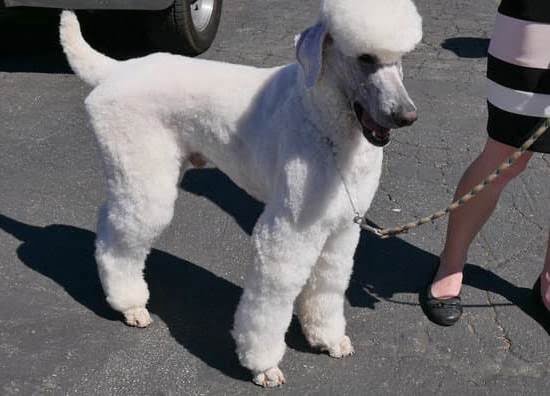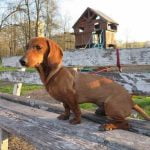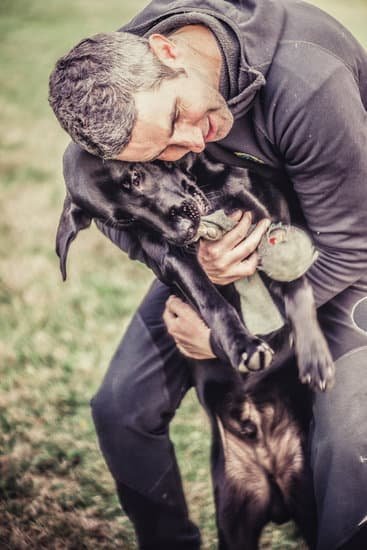Are you wondering how to train pheasant dog for hunting? Pheasant dogs play a crucial role in the success of a hunting expedition, and their training is essential to ensure that they can perform at their best in the field.
In this article, we will explore the various aspects of training a pheasant dog, from understanding their role in hunting to advanced training techniques. Whether you are a seasoned hunter or a novice looking to train your first pheasant dog, this guide will provide you with valuable insights and practical tips to help you along the way.
Before delving into the specifics of pheasant dog training, it is important to grasp the significance of these canine companions in the context of hunting. Pheasant dogs are specially trained to assist hunters in locating and retrieving game birds, primarily pheasants. Their keen sense of smell and natural instincts make them invaluable assets in the field, enhancing the overall hunting experience and increasing the chances of a successful hunt.
In the following sections, we will cover key aspects of training a pheasant dog, including selecting the right breed for hunting, basic obedience training, introducing them to birds, field training simulations, scent training exercises, and advanced techniques for honing their hunting skills. Additionally, we will offer valuable tips for achieving hunting success with your trained pheasant dog by your side.
Whether you are new to pheasant hunting or looking to improve your current training practices, this comprehensive guide has something for everyone.
Breed Selection
When it comes to training a pheasant dog, choosing the right breed is crucial for success in the field. Not all dogs are suited for pheasant hunting, so selecting a breed with the appropriate traits and instincts is important. Some of the most popular breeds for pheasant hunting include Labrador Retrievers, German Shorthaired Pointers, English Springer Spaniels, and Brittany Spaniels. These breeds are known for their strong hunting instincts, intelligence, and trainability.
Labrador Retrievers are a popular choice for pheasant hunting due to their gentle nature and eagerness to please their owners. They are also highly trainable and have a natural instinct for retrieving birds. German Shorthaired Pointers are another excellent option, known for their versatility in various hunting situations and their ability to point and retrieve game birds.
English Springer Spaniels excel in flushing out birds from cover, making them well-suited for pheasant hunting in dense areas. Brittany Spaniels are also highly regarded for their agility and keen sense of smell, making them valuable assets in locating and flushing out pheasants.
Before selecting a breed for pheasant hunting, it’s important to consider the specific requirements of your hunting environment and your personal preferences as a hunter. Each breed has its own unique characteristics and strengths, so it’s essential to choose a breed that aligns with your hunting style and needs.
Additionally, it’s crucial to research breeders or rescue organizations to ensure that you acquire a healthy and well-bred dog with the potential for success as a pheasant dog. Ultimately, choosing the right breed is an important first step in training a successful pheasant dog.
Basic Obedience Training
Command Training
The first step in basic obedience training is teaching the dog fundamental commands such as sit, stay, come, heel, and down. These commands lay the groundwork for more advanced training and are essential for controlling the dog in hunting situations. Consistent and patient repetition is key to ensuring that these commands are effectively understood and obeyed by the pheasant dog.
Socialization and Manners
In addition to command training, it is important to focus on socialization and manners. Pheasant dogs need to be comfortable around other people, animals, and birds while remaining focused on their handler during hunting activities. Proper socialization can prevent fear-based aggression or excessive excitement when encountering pheasants in the wild.
Behavioral Training
Lastly, basic obedience training should address behavioral issues such as jumping, excessive barking, or destructive chewing. Hunting with a pheasant dog requires a high level of discipline, so addressing these behaviors early on will contribute to a more successful partnership between hunter and dog in the field. By establishing proper boundaries and expectations from the start, hunters can ensure that their pheasant dog will be well-mannered and reliable during hunting expeditions.
Introduction to Birds
Pheasant hunting is a popular sport, and having a well-trained pheasant dog can greatly enhance the experience. One crucial aspect of training a pheasant dog is introducing them to the sight and smell of pheasants. This step is essential in preparing the dog for actual hunting scenarios, as they need to be comfortable and familiar with the birds they will be working with.
To familiarize a pheasant dog with the sight and smell of pheasants, trainers can use various methods such as using game bird wings or frozen birds during training sessions. This will allow the dog to become accustomed to the appearance and scent of the birds. Training sessions should be conducted in a controlled environment initially so that the dog can gradually adjust to being around pheasants without becoming overly excited or anxious.
It’s important for trainers to remain patient and consistent during this process, as each dog will respond differently. By allowing the dog to become familiar with pheasants at their own pace, trainers can help build confidence in their pheasant dog’s ability to work effectively in real hunting situations.
| Training Methods | Outcome |
|---|---|
| Using game bird wings or frozen birds during training | Familiarizes dogs with appearance and scent of pheasants |
| Conducting training sessions in a controlled environment | Allows dogs to adjust gradually without becoming overly excited or anxious |
| Remaining patient and consistent | Helps build confidence in pheasant dogs’ ability to work effectively in hunting scenarios |
Scent Training
Scent training is a crucial aspect of preparing a pheasant dog for hunting. A pheasant dog’s ability to track and locate birds by scent is essential for a successful hunt. Through proper scent training, a dog can develop its natural instincts and become an effective hunting partner.
To start scent training, it is important to introduce the dog to the specific scent of pheasants. This can be done by using feathers, wings, or even whole birds to familiarize the dog with the unique smell. Here are some steps to follow when conducting scent training:
- Introduce the pheasant scent gradually, allowing the dog to sniff and become accustomed to it.
- Use retrieving exercises and hide scented objects for the dog to find, associating the scent with the act of hunting.
- Practice tracking exercises in different environments and terrains to enhance the dog’s ability to locate birds based on their scent.
Consistent practice and positive reinforcement will help strengthen the dog’s scent-tracking abilities. With patience and dedication, a well-trained pheasant dog can become an invaluable asset during hunting season.
Advanced Training Techniques
Continued Field Training
Once your pheasant dog has mastered basic obedience and has been introduced to birds, it’s time to focus on advanced field training. This includes simulating real hunting scenarios and practicing retrieval in various environments.
Set up training sessions in different terrains such as fields, forests, and wetlands to expose your dog to a variety of hunting conditions. Use remote launchers or bird launchers to mimic the sound and sight of flushing pheasants, allowing your dog to practice their response and retrieval skills.
Improving Endurance and Stamina
A successful pheasant hunt can require hours of physical activity, so it’s important to build your dog’s endurance and stamina. Incorporate long walks, jogs, and swimming sessions into their training routine to improve their overall physical condition. Gradually increase the distance and duration of these exercises to ensure that your pheasant dog is prepared for the demands of a full day of hunting.
Refining Scent Training
Scent training is crucial for a pheasant dog, as they rely heavily on their sense of smell to track and locate birds. Advanced scent training involves challenging your dog with more complex scent trails using different scents or combinations of scents. You can also introduce distractions or obstacles along the trail to test their focus and determination. Regular scent training exercises will help refine your dog’s tracking abilities, making them more effective hunters in the field.
By incorporating these advanced training techniques into your pheasant dog’s routine, you can perfect their hunting skills and ensure they are well-prepared for a successful hunting season. Remember that patience, consistency, and positive reinforcement are key elements in any advanced training program for hunting dogs. With dedication and effort, you can celebrate the bond between hunter and pheasant dog through an exhilarating and fulfilling hunting experience.
Tips for Hunting Success
When it comes to a successful pheasant hunting season, it’s essential to have the right strategies in place. Here are some tips to help ensure hunting success:
- Scout the Area: Before the hunting season begins, take the time to scout the hunting area. Look for areas where pheasants are likely to be found, such as grasslands and fields with good cover.
- Use the Wind: Pheasants have a keen sense of smell, so it’s important to use the wind to your advantage. Approach potential hunting areas with the wind at your back, so that your scent doesn’t alert the birds.
- Stay Quiet: When hunting pheasants, silence is key. Avoid making unnecessary noise that could startle the birds and cause them to fly away before you get a chance to take a shot.
In addition to these strategies, it’s important to have a well-trained pheasant dog by your side. A properly trained dog can make all the difference in a successful hunt. With a combination of basic obedience training, field training, and scent training, your dog will be an invaluable asset during pheasant hunting season. Remember to reinforce positive behaviors and continue practicing with your dog throughout the season for optimal results.
By implementing these tips and putting in the effort to train your pheasant dog effectively, you can greatly increase your chances of having a successful and fulfilling pheasant hunting season. Happy hunting.
Conclusion
In conclusion, training a pheasant dog requires dedication, patience, and a deep understanding of the role these dogs play in hunting. It is important to remember that the bond between a hunter and their pheasant dog is built on trust, respect, and shared experiences in the field. Through breed selection, basic obedience training, introduction to birds, field training, scent training, and advanced techniques, hunters can develop their pheasant dogs into skilled and reliable hunting companions.
The bond between a hunter and their pheasant dog goes beyond mere partnership in the field. It is a relationship built on mutual trust and respect. The time spent training together creates a strong bond between the two, fostering camaraderie and companionship that extends beyond hunting season. This incredible connection makes the partnership between a hunter and their pheasant dog truly special and rewarding.
Ultimately, successfully training a pheasant dog is not just about turning them into efficient hunters; it is also about nurturing a deep bond that enriches both the dog’s life and the hunter’s experience. By celebrating this unique bond and continuing to train with dedication and care, hunters can ensure that they have an invaluable companion for their pheasant hunting adventures for many years to come.
Frequently Asked Questions
How Long Does It Take to Train a Pheasant Dog?
The time it takes to train a pheasant dog can vary depending on the dog’s breed, temperament, and previous training. On average, it can take several months to a year to fully train a pheasant dog for hunting.
This training usually involves teaching the dog basic obedience commands, introducing them to birds and gunshots, and practicing in realistic hunting scenarios.
How Do You Train an Upland Dog?
Training an upland dog for pheasant hunting requires patience, consistency, and positive reinforcement. The first step is usually teaching the dog basic obedience commands such as sit, stay, and come.
Then, the trainer introduces the dog to birds and gradually exposes them to gunshots in a controlled environment. As training progresses, the dog is taken out into realistic hunting scenarios where they learn to locate and retrieve pheasants.
What Is the Easiest Dog to Train for Pheasant Hunting?
The easiest dog breeds to train for pheasant hunting are typically those with a strong hunting instinct and eagerness to please their owner. Breeds such as Labrador Retrievers, German Shorthaired Pointers, and English Springer Spaniels are known for their intelligence, trainability, and natural abilities in the field.
These dogs tend to pick up on hunting training quickly and are often eager to work alongside their owners in pursuit of game birds like pheasants.

Welcome to the blog! I am a professional dog trainer and have been working with dogs for many years. In this blog, I will be discussing various topics related to dog training, including tips, tricks, and advice. I hope you find this information helpful and informative. Thanks for reading!





